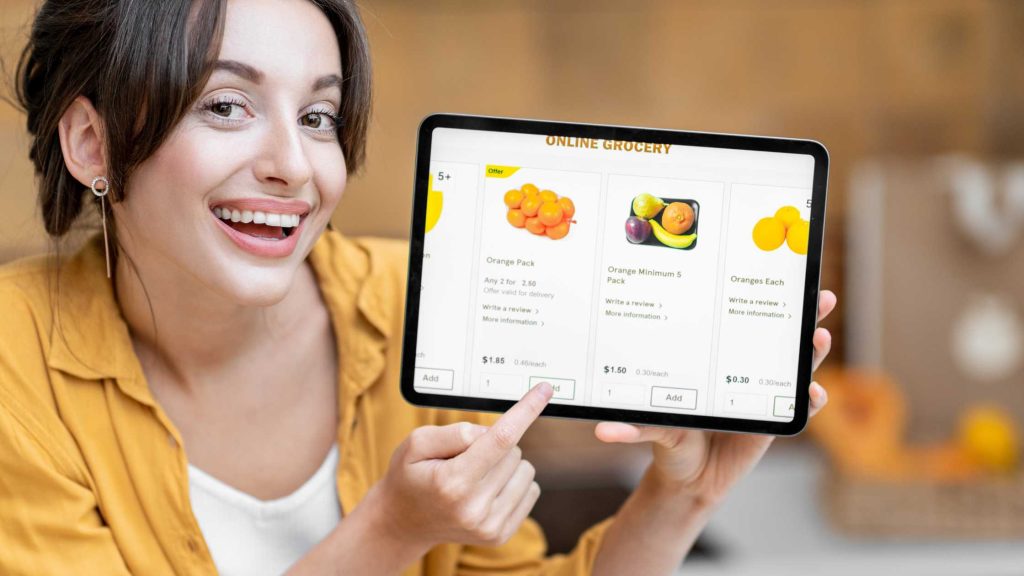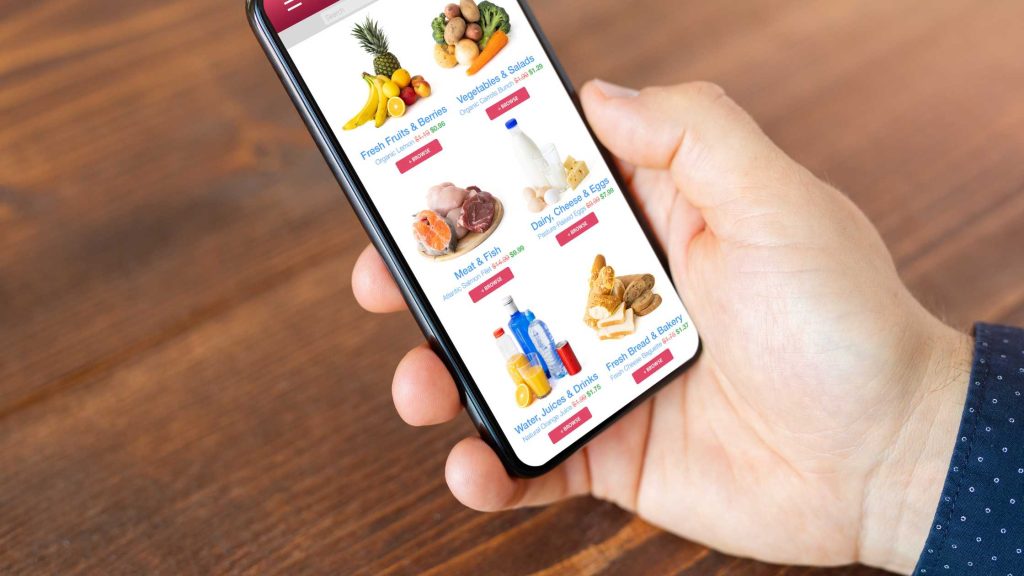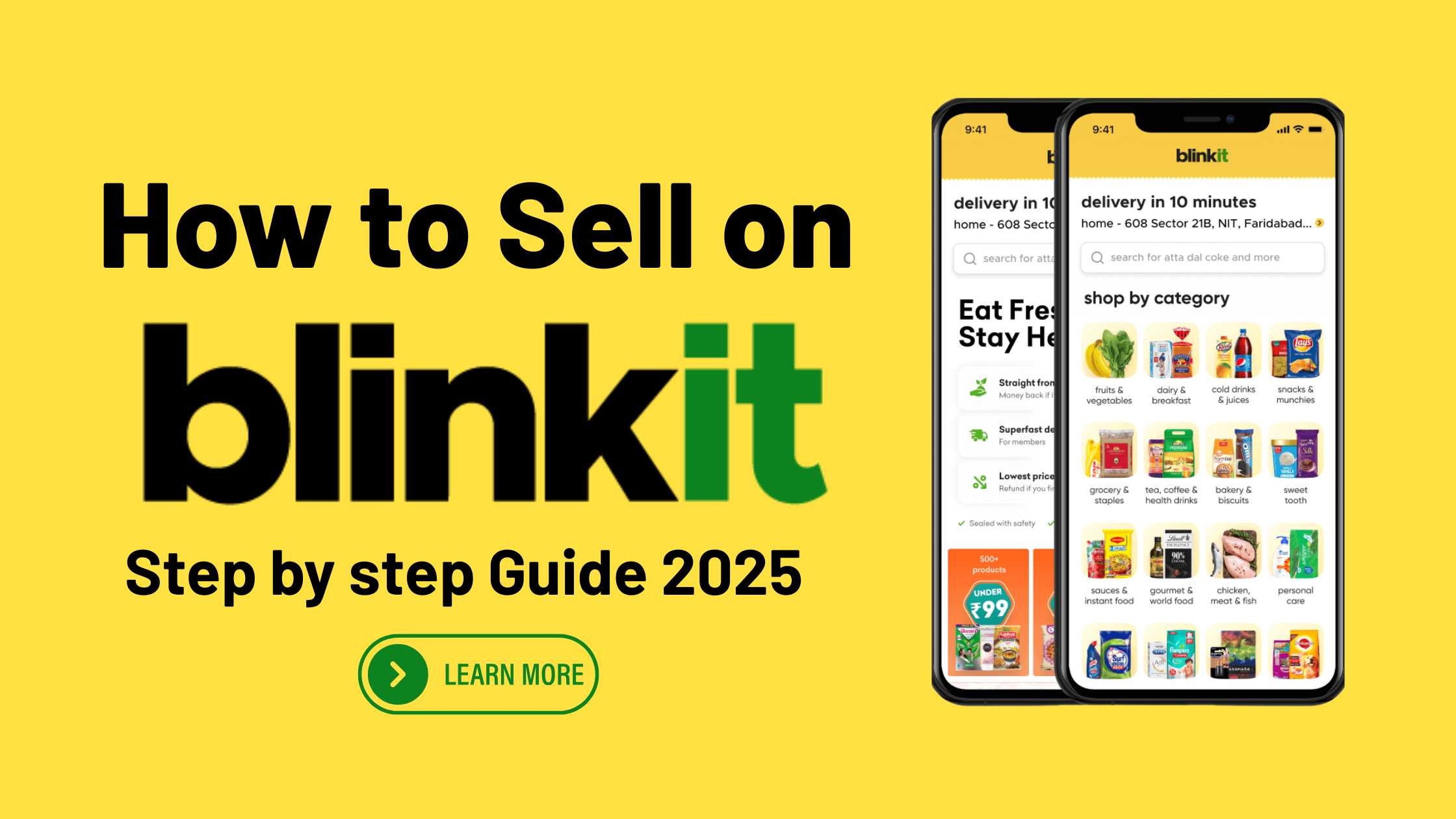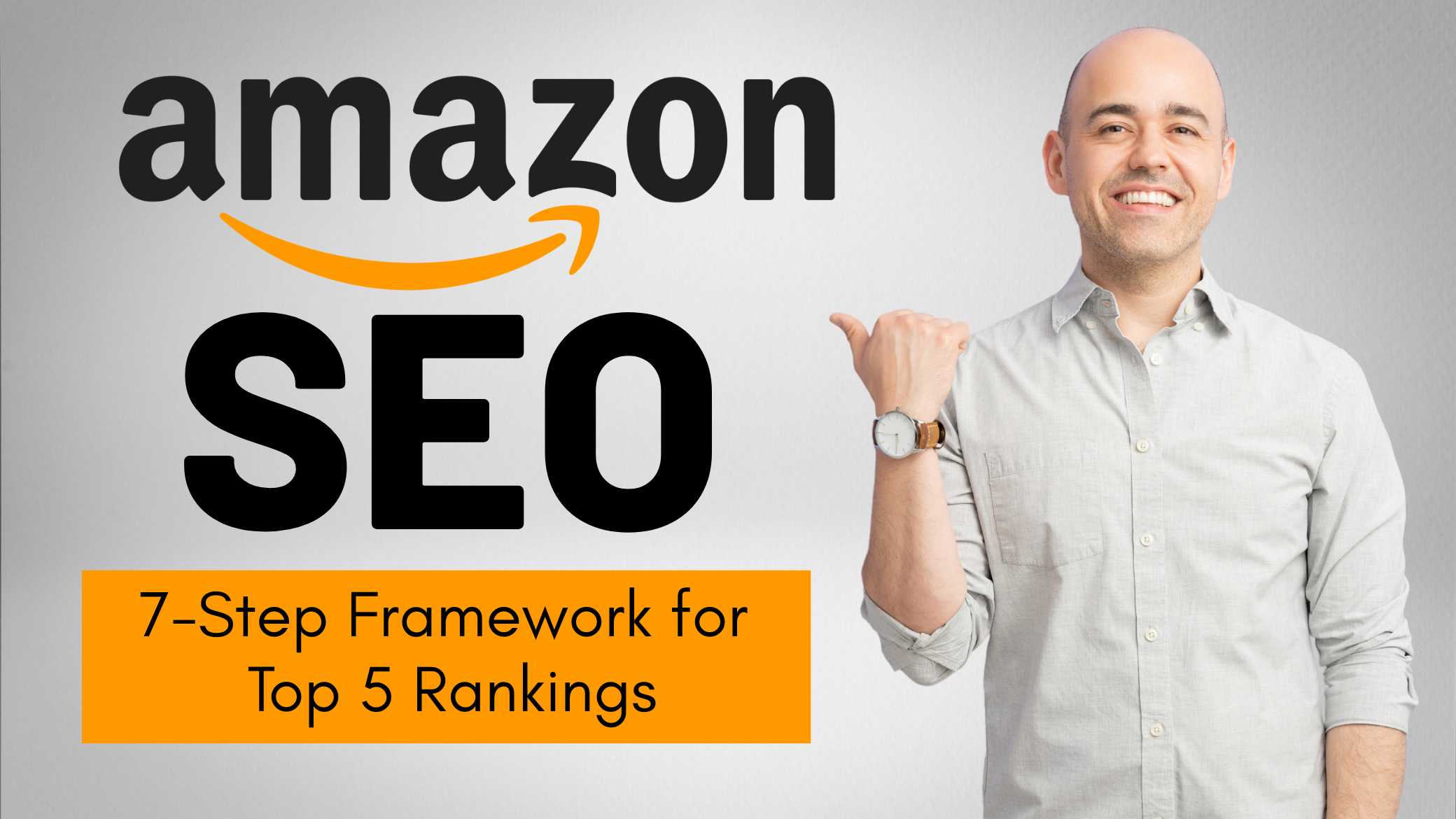How to Sell on Blinkit : In 2025, Blinkit continues to redefine quick commerce in India, offering 10-minute delivery across major cities. Formerly Grofers, Blinkit is now a vital e-commerce channel for businesses wanting to tap into the fast-paced demand for groceries, FMCG, and daily essentials. As hyperlocal delivery models gain popularity, selling on Blinkit presents entrepreneurs, kirana store owners, and D2C brands with unmatched exposure to millions of ready-to-buy consumers.
Table of Contents
Understanding how to sell on Blinkit is key for any brand or seller who wants to grow in the instant commerce space. This guide walks you through the entire process, from registration to scaling, while using high-ranking SEO strategies throughout
Who Can Sell on Blinkit in 2025?

Blinkit is open to a wide range of sellers. If you own a physical store, are a D2C brand, manage a small-scale packaged food unit, or run a distribution business, you can sell on Blinkit. Eligible sellers include grocery retailers, dairy suppliers, snack brands, personal care vendors, cleaning supply manufacturers, baby product sellers, and OTC health product distributors. Having proper licenses like GST and FSSAI (for food products) is mandatory.
Also Read : Amazon SEO: 7-Step Framework for Top-Five Rankings
Blinkit prioritizes speed, compliance, and quality, which makes it ideal for sellers that can offer consistent inventory and timely order fulfillment
Step 1: Understand What Sells on Blinkit
Before applying, evaluate your product catalog. Blinkit thrives on essential items and repeat-purchase products. Categories that perform exceptionally well include fresh dairy, packaged snacks, beverages, instant meals, home cleaning products, personal hygiene products, baby food, pet food, dry fruits, and health supplements. Sellers with localized or regional product varieties also do well, particularly if they meet demand in urban neighborhoods where Blinkit operates. Products must be compliant with safety regulations, barcoded, properly packed, and labeled as per FSSAI or packaging laws
Step 2: Seller Registration Process on Blinkit in 2025
The registration process is digital, paperless, and straightforward. Visit the Blinkit partner portal and begin your seller application. You’ll need to upload your business name, GST number, FSSAI license (if applicable), PAN card, bank account details, and a cancelled cheque or bank statement. Choose your selling model—either supply to a Blinkit fulfillment center or register as a Blinkit Partner Store. Once submitted, your application will go through verification. If all documents are in order, approval is granted within 3–7 working days. You’ll then get access to the Blinkit Seller Dashboard to manage your entire business
Step 3: Listing Products on Blinkit
Creating accurate and appealing product listings is key to driving sales. Each product should include a clear title, detailed description, weight/pack size, brand name, selling price, MRP, product images, expiry details, and barcode. Ensure product titles are SEO-optimized. For instance, instead of “Juice,” use “Real Mixed Fruit Juice 1L – No Added Sugar.” The more specific and keyword-friendly your listings, the more likely they are to rank higher in app searches. High-resolution images on white backgrounds and concise, benefits-driven descriptions help drive conversions. Blinkit may reject listings that don’t meet quality standards
Step 4: Inventory, Stock, and Order Fulfillment Models
There are two models to fulfill Blinkit orders. First is the Fulfillment Center Model, where you supply inventory to Blinkit’s micro-warehouses (dark stores), and they handle order processing and delivery. Second is the Partner Store Model, where Blinkit notifies you of incoming orders, and you pack the items for pick-up by Blinkit delivery executives. Whichever model you choose, inventory must be accurate, fresh, and updated in real-time. Stockouts, delays, and expired products lead to penalties. Use Blinkit’s dashboard tools to track product movement, set low-stock alerts, and forecast demand based on buying patterns
Step 5: Understanding Blinkit’s Pricing and Commission
In 2025, Blinkit uses a flexible commission-based model. Commission rates vary by category—starting from 5% for essential commodities and going up to 15% for premium products like gourmet foods or cosmetics. This commission is charged on the selling price and is subject to 18% GST. Blinkit does not charge any listing fees or fixed monthly subscriptions. Sellers must factor in commission, packaging cost, GST, and payment settlement cycles while setting prices. Payouts are settled weekly and transferred to your linked bank account. Transparent financial reporting is available in your dashboard to track earnings and deductions
Step 6: Promotions, Ads, and Boosting Visibility
To stand out in Blinkit’s competitive marketplace, sellers need to leverage promotions. Blinkit offers featured listings, homepage placements, search ads, limited-time discounts, and seasonal bundles. Sponsored listings appear in high-traffic sections of the app, boosting exposure and conversions. Use performance insights to identify which SKUs generate maximum ROI and double down on ads accordingly. Blinkit also supports co-branded promotions during festivals, weekends, and flash sales. Advanced sellers can apply for a Brand Store—a curated section for premium products that boosts credibility and repeat purchases
Step 7: Performance Metrics and Seller Score
Blinkit tracks your performance using various metrics including order acceptance time, stock availability, fulfillment accuracy, packaging quality, and customer ratings. Sellers with consistently high scores are rewarded with better placements, lower ad costs, and eligibility for premium tools. Negative experiences—such as cancelled orders, wrong product delivery, or expired goods—can reduce your seller score and lead to deactivation. Aim for a fulfillment accuracy of over 98%, update stock in real-time, and train your staff to pick, pack, and hand over items quickly. Positive reviews boost organic rankings, while poor service can harm visibility and reputation
Step 8: Managing Customer Feedback and Reviews

Customer reviews are crucial for increasing trust and boosting conversion rates. A product with consistent 4+ star reviews sells more. Encourage happy customers to leave feedback and address negative reviews with empathy and action. Refunds, replacements, or simple apologies can turn a bad review into a second chance. Your ability to maintain customer satisfaction will directly affect your seller health score on Blinkit. The platform promotes trusted sellers and their products higher in search results, making reputation management a key business function
Step 9: Scaling Your Business on Blinkit

Once you’ve gained momentum in one zone or warehouse, consider scaling to multiple zones or cities. This can be done by supplying to additional Blinkit dark stores or opening new Partner Store branches. Expand your catalog to include seasonal products, new categories, or regional specialties. Some top Blinkit sellers also create their own private labels and bundle offers for increased profits. Track metrics like reorder rate, cart size, and time-of-day sales to refine your strategy. Top sellers use third-party inventory software, dynamic pricing tools, and demand forecasting models to optimize operations
Top Product Categories That Sell Well on Blinkit in 2025
Some of the top-selling categories this year include breakfast cereals, milk and dairy, atta and rice, household cleaners, baby diapers, snacks and namkeen, personal hygiene, health supplements, dry fruits, chocolates, and ready-to-cook meals. If you’re a local supplier or own a specialty product line like organic groceries or Ayurvedic health food, Blinkit offers a high-visibility platform for consistent revenue. Urban consumers prefer trusted, quick-access products and are loyal to fast sellers with high ratings and fast delivery
How Blinkit Compares to Other Grocery Platforms
While Amazon Fresh and BigBasket dominate scheduled grocery delivery, Blinkit’s 10-minute model has positioned it as a leader in impulse and emergency shopping. Zepto is a close competitor, but Blinkit’s acquisition by Zomato and its widespread dark store network give it a performance edge. Blinkit is perfect for sellers who want to scale fast in top-tier urban centers and don’t want to handle the end-to-end delivery logistics themselves. As a seller, your job is to ensure stock quality and timely handover—Blinkit handles the rest
Tools and Support Available for Blinkit Sellers
Blinkit offers seller support through webinars, FAQ hubs, and a dedicated partner helpdesk. High-performing sellers also get access to account managers. The seller app and web portal are easy to use and support functions like order tracking, sales reports, product uploads, payout tracking, and performance monitoring. Use the insights provided in the analytics tab to understand top-performing products, revenue trends, and stock status. Blinkit also allows integration with third-party inventory and POS tools for seamless backend operations
Frequently Asked Questions About Selling on Blinkit
Many new sellers ask if they need GST and FSSAI. The answer is yes—these are non-negotiable. Homemade products can be sold if properly packed, labeled, and licensed. Can a physical store without a warehouse sell? Yes—Partner Store Model supports this. What is the average settlement time? Payouts happen weekly. Can I sell under my own brand name? Yes—private label products are encouraged if compliant. Does Blinkit support cold storage? Yes—in selected cities for frozen and dairy categories. Can I sell regionally popular products? Yes—regional and cultural products often perform very well in local zones
Initial Investment and Profitability Potential
Small sellers can start with a capital of ₹25,000 to ₹50,000 for limited SKUs, while medium-scale operations may need ₹1 to ₹2 lakhs to build a diverse catalog. With low overheads, high repeat purchases, and no fixed monthly fees, Blinkit is one of the most profitable marketplaces for sellers in 2025. Once you scale operations and reinvest into ads and inventory, it’s possible to build a recurring monthly income stream
How to Sell on Blinkit – Conclusion:

If you’re looking to tap into the fast-growing online grocery and FMCG market in India, Blinkit is one of the most effective channels available. Its quick delivery model, low entry barrier, and urban consumer reach make it ideal for small businesses, D2C brands, and traditional retailers going digital.
Buy Now : Ecommerce Website With 100 Products
By following this comprehensive step-by-step guide—starting from registration, catalog setup, order fulfillment, advertising, and scaling—you can build a strong and sustainable presence on Blinkit. With the right strategy, this platform can unlock long-term profits and brand growth
Disclaimer : This guide is based on public information and industry observations as of 2025. Blinkit’s policies, fee structures, and operational models may change over time. Always consult the official Blinkit partner site for the most accurate and updated seller terms
Keywords : How to Sell on Blinkit – How to Sell on Blinkit 2025 – How to Sell on Blinkit Guide ,








